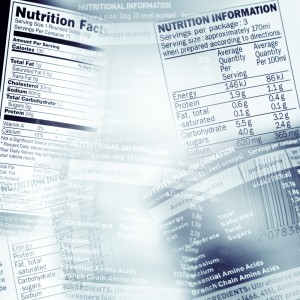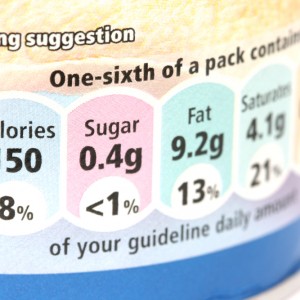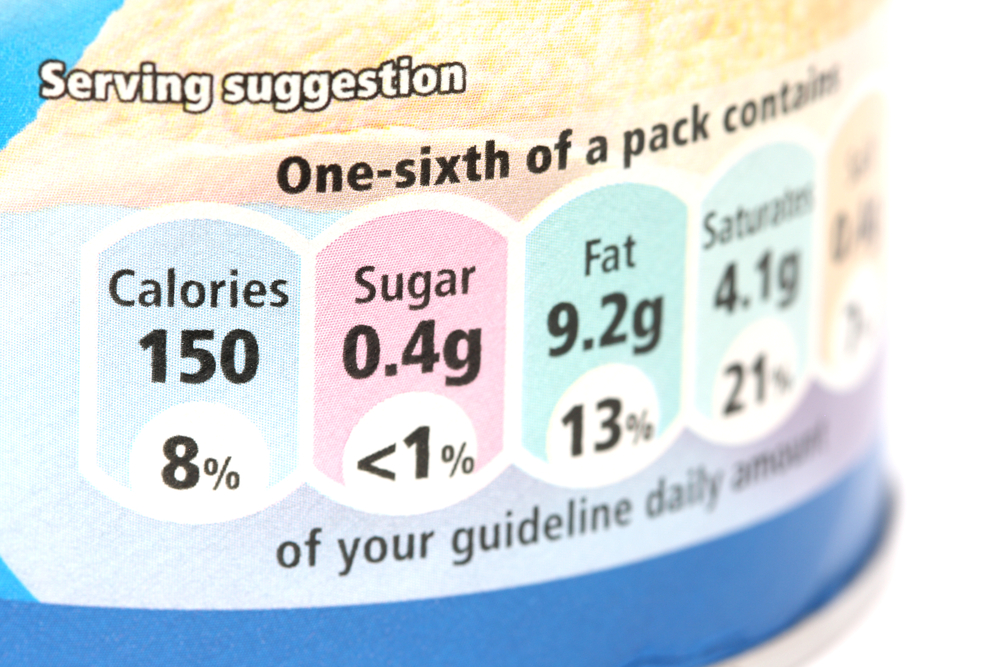 The expert panel of outside independent experts making up the 2015 U.S. Dietary Guidelines Advisory Committee (DGAC) on revisions and additions to the Dietary Guidelines for Americans has submitted its 500-page report detailing recommendations to Health and Human Services (HHS) Secretary Sylvia M. Burwell and Agriculture Secretary Tom Vilsack. These officials have in turn released the report online for public review and comment. The panel’s report, along with input from other federal agencies and from the public, will be considered by the HHS and the U.S. Department of Agriculture (USDA) in their development of amendments to the Dietary Guidelines for Americans, 2015, slated for release late this year.
The expert panel of outside independent experts making up the 2015 U.S. Dietary Guidelines Advisory Committee (DGAC) on revisions and additions to the Dietary Guidelines for Americans has submitted its 500-page report detailing recommendations to Health and Human Services (HHS) Secretary Sylvia M. Burwell and Agriculture Secretary Tom Vilsack. These officials have in turn released the report online for public review and comment. The panel’s report, along with input from other federal agencies and from the public, will be considered by the HHS and the U.S. Department of Agriculture (USDA) in their development of amendments to the Dietary Guidelines for Americans, 2015, slated for release late this year.
Since 1985, the HHS and USDA have appointed a Dietary Guidelines Advisory Committee (DGAC) consisting of nationally recognized experts in the field of nutrition and health, charged with reviewing pertinent scientific and medical knowledge current at the time. The Committee then prepares a report for the Secretaries that provides recommendations for the next edition of the Dietary Guidelines based on their review of current literature.
The 14 outside experts who made up the 2015 Dietary Guidelines Advisory Committee are persons who are nationally recognized in the fields of nutrition, medicine and public health, and have held seven public meetings over the past two years. The Committee’s recommendations are non-binding and advisory to HHS and USDA as they draft the Dietary Guidelines for Americans, with the Committee’s mandate being provision of the latest, science-based nutrition recommendations for the general public with the goal of preventing disease and promoting healthy, active lifestyles. It is written for and used primarily by nutrition and health professionals, policy makers and educators, and is the foundation for federal nutrition efforts, including education initiatives and food assistance programs.
The 2015 panel’s proposals as presented are being generally well-received by independent commentators and nutrition bloggers. For example, Food Politics blogger Marion Nestle, like most independent nutrition researchers, agrees with the Committee that in general, diets higher in plant-based foods and lower in calories and animal-based foods are more health-promoting and additionally associated with lower environmental impact than is the current Standard American Diet (SAD). She further suggests that “concerted, bold actions” will be required to shift the national food culture paradigm from the SAD model toward creating of a “culture of health.”
Ms. Nestle congratulates the advisory committee for what she calls its “courageous recommendations,” such as its emphasis on the need to tackle as a matter of public policy socio-economic issues and attitudes pertinent to the problems of overweight, obesity, and other diet-related chronic diseases, which they observe are prevalent across the entire U.S. population, but most particularly among lower-income demographics, creating critical health disparities that demand address.
They observe that obesity and many other health conditions with a nutritional origin are highly prevalent in America and contend that the nation must accelerate progress toward reducing the incidence and prevalence of overweight, obesity and chronic disease risk across the U.S. population throughout the lifespan and reduce disparities in obesity and chronic disease rates that exist in the United States for certain ethnic and racial groups and for those with lower incomes.
The DGAC panel critiques what it describes as “less than optimal dietary patterns in the United States,” which contribute directly to these prevailing conditions of poor population health and high chronic disease risk, observing overall body of evidence examined indicates that on average, current dietary patterns (i.e.: the SAD) are too low in vegetables, fruit, whole grains, and low-fat dairy, and too high in refined grains, saturated fat, added sugars, and sodium. The panelists maintain that a healthy dietary pattern will be is higher in vegetables, fruits, whole grains, low- or non-fat dairy, seafood, legumes, and nuts; abstemious in alcohol consumption; lower in red and processed meat; and low in sugar-sweetened foods and drinks and refined grains.
The panelists observe that in the SAD several nutrients fundamental to maintenance of health are under-consumed relative to Estimated Average Requirement or Adequate Intake levels set by the Institute of Medicine (IOM) characterizing the following as shortfall nutrients: vitamin A, vitamin D, vitamin E, vitamin C, folate, calcium, magnesium, fiber, and potassium. For adolescent and premenopausal females, iron also is a shortfall nutrient. Of the shortfall nutrients, calcium, vitamin D, fiber, and potassium also are classified as nutrients of particular public health concern because their underconsumption has been linked in the scientific literature to adverse health outcomes.
The panelists further point out that relative to recommended amounts in the USDA Food Patterns, the majority of the SAD-consuming U.S. population has low intake of key food groups that are important sources of the shortfall nutrients, including vegetables, fruits, whole grains, and dairy, and that furthermore intake is too high for refined grains and added sugars, which at the very best tend to crowd healthy, essential nutrient-bearing foods out of the typical American’s diet.
 Not everyone, however, is enchanted with what the committee has to say — particularly processed food industry interests.
Not everyone, however, is enchanted with what the committee has to say — particularly processed food industry interests.
For example, American Beverage Association (ABA) quickly issued a trenchant statement declaring: “the Committee’s efforts went beyond its charge and authority to develop dietary recommendations based on scientific evidence by advocating for public policies such as taxes and restrictions on foods and beverages. The Committee does not have the authority to make such recommendations, nor the scientific evidence or expertise to back up its recommendations.”
Being that the ABA is the trade association representing most U.S. companies involved in the manufacture and distribution of non-alcoholic beverages — many of them containing substantial amounts of added sugar — it’s not surprising that they would be disgruntled with the advisory panel’s comments regarding added sugar, but their riposte to the report, which is quite prolix and detailed given how quickly it was released, is surprisingly confrontational and aggressive.
The ABA statement contends that regarding sugar and sugar-sweetened beverages, the Committee “did not consider the body of science,” and also “went beyond its scope” in examining the safety of low- and no-calorie sweeteners and caffeine, ingredients that they note have been consistently deemed safe by the U.S. Food and Drug Administration for decades.
What the committee says is that the typical American’s intake of refined grains and added sugars is too high, and that better understanding is needed on how to maintain and encourage good habits, such as eating recommended amounts of fruit that are often started early in life but later abandoned.
They point to analysis of data on food categories, such as burgers, sandwiches, mixed dishes, desserts, and beverages, showing that the composition of many of these items could be improved so as to increase intake of vegetables, whole grains, and other under-consumed food groups and to lower intake of the nutrients sodium and saturated fat, and the food component refined grains.
And a particular bone of contention for the ABA, they recommend improved beverage selections that limit or remove sugar-sweetened beverages, and place limits on sweets and desserts would help lower intakes of the food component added sugars. The DGAC encourages the consumption of healthy dietary patterns that are low in saturated fat, added sugars, and sodium, with goals for the general population including a maximum of 10 percent of total calories from added sugars per day as a part of a healthy dietary pattern that is balanced, as appropriate, in calories. Regarding that 10 [percent metric, the ABA retorts icily that “This Committee’s role is to make food-based recommendations based on the totality of the science. The Institute of Medicine (IOM) is the body which sets nutrient thresholds. IOM suggests that ‘added sugars should comprise no more than 25 percent of total calories consumed.'”
However, it bears pondering that if added sugars are making up a quarter of one’s caloric consumption (plus whatever non-added sugars and other carbohydrates are in your diet), what is getting crowded-out? Ms. Nestle notes that half the energy intake in U.S. diets comes from a combination of burgers and sandwiches (~14%), desserts and sweet snacks (8.5%), sugary beverages (6.5%), mixed dished made with rice, pasta, and other grains (5.5%, savory snacks (~5%), pizza (4.3%), and meat, poultry and seafood mixed dishes (~4%), and that early half of total sugar intake comes from beverages other than milk and 100% fruit juice.
Furthermore Ms. Nestle says there is “strong and consistent evidence” showing added sugar from food and/or sugar sweetened beverages associated with excess body weight in children and adults, and that strong evidence also exists showing that “higher consumption of added sugars, especially sugar-sweetened beverages, increases the risk of type 2 diabetes among adults and this relationship is not fully explained by body weight.”
The DGAC maintains that rather than focusing purely on reduction of particular food categories and constituents, emphasis should also be placed on replacement and shifts in food intake and eating patterns, with, for example added sugars not only being reduced in the diet and replaced with low-calorie sweeteners, but rather with healthy options, such as plain water in place of sugar or artificially sweetened beverages.
The ABA doesn’t like that either, slamming what it terms the DJAC’s Committee’s “laser-like focus on ‘added’ sugars,” and chiding the Committee’s “lack of support” for use of low- and no-calorie sweeteners and maintaining that a body of science “clearly shows that these ingredients can be an effective tool in weight loss, weight management and management of health conditions such as diabetes and hypertension.”
However, one might observe that plain water would presumably be even more beneficial in addressing those health conditions than flavored beverages containing sugar or artificial sweeteners and usually a variety of other chemical ingredients as well.
The ABA does make some valid points in its release, such as that while recent trends show sugar-sweetened beverage consumption has declined significantly over the past decade, with the CDC’s National Health and Nutrition Examination Survey (NHANES) showing a consistent and progressive reduction in consumption of soda and all sugar-sweetened beverages in all age groups from 1999 to 2010,and noting that this “steep decline” in sugar-sweetened beverage consumption was not accompanied by any substantial change in prevalence of obesity. (Soda consumption was 67 kcal/d lower in youths and 58 kcal/d lower in adults in 2010 compared to 1999.)
True enough. Intake of empty calories cannot alone be blamed for the pandemic of obesity afflicting early 21st-Century American youth. Sedentary pastimes and lack of physical exercise are certainly playing a role. However the excess calories combined with lack of activity to burn them odd arguably create a “perfect storm” of factors inclining toward overweight and obesity.
The ABA release says the beverage industry’s advocacy position is that the 2015 Dietary Guidelines for Americans should be based on the weight of scientific evidence while also providing real world guidance that is achievable for the majority of Americans, and that in reviewing the Committee’s recommendations, the industry encourages regulatory and advisory agencies to seek ways to help Americans achieve balance and moderation in their diet — while also promoting the importance of physical activity, rather than advocating for “restricting only specific items and eliminating choice.”
The problem with that go-slow model is that time is running out for a couple of generations of young Americans, and remediation of that will, as the DGAC maintains, “require a paradigm shift to an environment in which population health is a national priority and where individuals and organizations, private business, and communities work together to achieve a population-wide “culture of health” in which healthy lifestyle choices are easy, accessible, affordable and normative — both at home and away from home.”
In such a culture, the committee members suggest that health care and public health professionals also would “embrace a new leadership role in prevention, convey the importance of lifestyle behavior change to their patients/clients, set standards for prevention in their own facilities, and help patients/clients in accessing evidence-based and effective nutrition and comprehensive lifestyle services and programs.”
The Dietary Guidelines for Americans was first published in 1980, and beginning in 1990 Congress mandated that HHS and USDA release a new edition at least every five years. The public is being encouraged to view the Committee’s report and to provide written comments at http://www.DietaryGuidelines.gov for a period of 45 days after publication in the Federal Register. The public will also have an opportunity to offer oral comments at a public meeting in Bethesda, Maryland, on March 24, 2015. Persona interested in providing oral comments at the March 24, 2015, public meeting can register at http://www.DietaryGuidelines.gov
The DGAC’s report can be downloaded at:
http://www.health.gov/dietaryguidelines/2015-scientific-report/
Data analyses used by the DJAC are available here:
http://www.health.gov/dietaryguidelines/data-analyses.asp
Sources:
Dietary Guidelines for Americans, 2015 (http://DietaryGuidelines.gov)
Health Politics
The American Beverage Association


